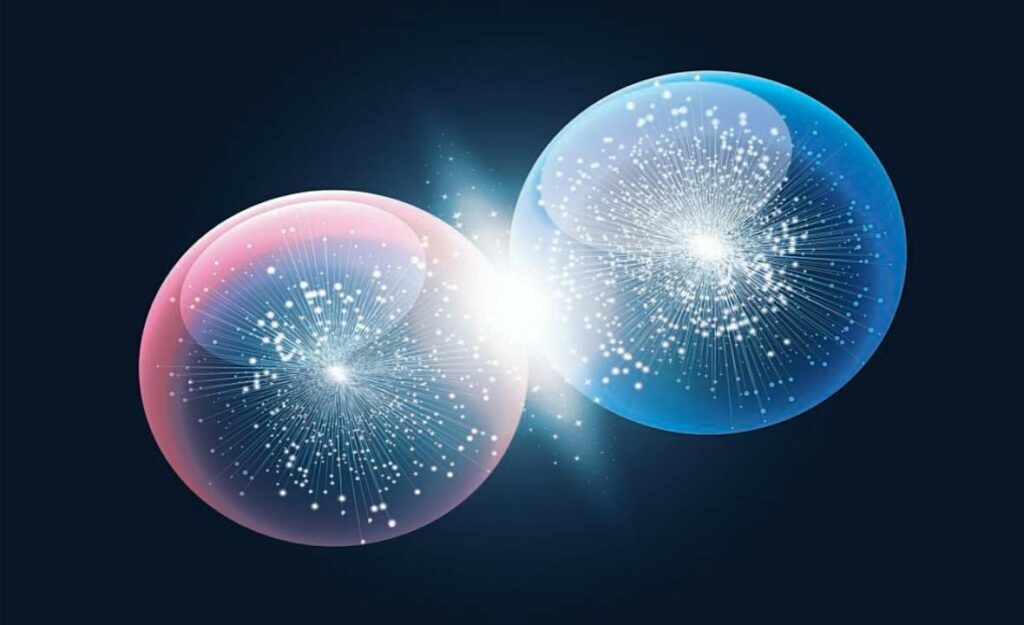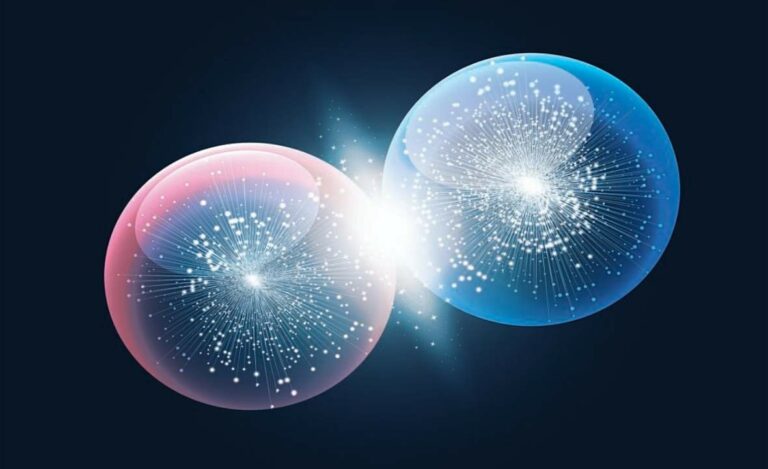The phenomenon of like-charged particles attracting each other goes against the fundamental principles of physics.
This is a principle of basic physics that states that ‘opposites charges attract while like charges repel’. However a paper published today in Nature Nanotechnology from Oxford University has shown that like charges in solution can indeed attract each other across great distances.

As unexpectedly, the team also identified that the solvents exhibit a dissimilar influence on positively and negatively charged particles.
In addition to challenging conventional wisdom, these findings have more tangible application for any processes involving interparticle and intermolecular interactions spanning multiple scales of length, such as self-assembly, crystallization, and phase-separation.
In particular, the team of researchers, based at Oxford’s Department of Chemistry, has established that negatively charged particles attract each other at large separations whereas positively charged particles repel, whereas the reverse is true for solvents such as alcohols. The present results are rather unexpected since they appear to go against the fundamental tenet of electromagnetism as the force between like charges is repulsive at any distance.
The negatively charged silica microparticles in water were observed under bright-field microscopy and the results showed that the particles aggregated in hexagonal structures. Aminated silica particles with positive charges, on the other hand, did not cluster in water.
Applying an interparticle interaction theory which takes into account the solvent structure at the interface the team determined that for negatively charged particles in water there exists a dominant attractive force at large distances that overcomes electrostatic repulsion leading to clustering. In the case of positively charged ions in water, the solvent driven interaction is always repulsive and hence no clusters are formed.
It was also revealed to be a pH-responsive effect; the team was able to prevent (or promote) the formation of the clusters in case of the negatively charged particles. In both the cases, the positively charged particles did not cluster regardless the pH.
Of course, the team quickly considered whether this influence on charged particles could be flipped around so that positive particles cluster together while negative ones will remain single. By changing the solvent to alcohols, such as ethanol, which has different interface behavior than water, this was exactly what they observed: The surfaces of the aminated silica particles that were positively charged formed hexagonal clusters unlike the negatively charged silica surfaces.
In the view of the researchers, this study suggests an epistemological paradigm shift that affects our conception of processes that range from the shelf life of drugs and other chemical compounds to the pathological dysfunction leading to protein folding in disease. They also give fresh evidence for the possibility of measuring properties of the interfacial electrical potential attributes of the solvent, including its polarity or the degree to which it repels or attracts electrons.
The study was led by Professor Madhavi Krishnan from Oxford University’s Department of Chemistry and she has said, “I am really very proud of my two graduate students, as well as the undergraduates, who have all worked together to move the needle on this fundamental discovery. ”
Sida Wang (Department of Chemistry, Oxford University), a first-author on the study, says, “I still find it fascinating to see these particles attract, even having seen this a thousand times.”
Reference:A charge-dependent long-ranged force drives tailored assembly of matter in solution, Nature Nanotechnology (2024). DOI: 10.1038/s41565-024-01621-5
Do not forget to share your opinion with us to provide you with the best posts !




0 Comments